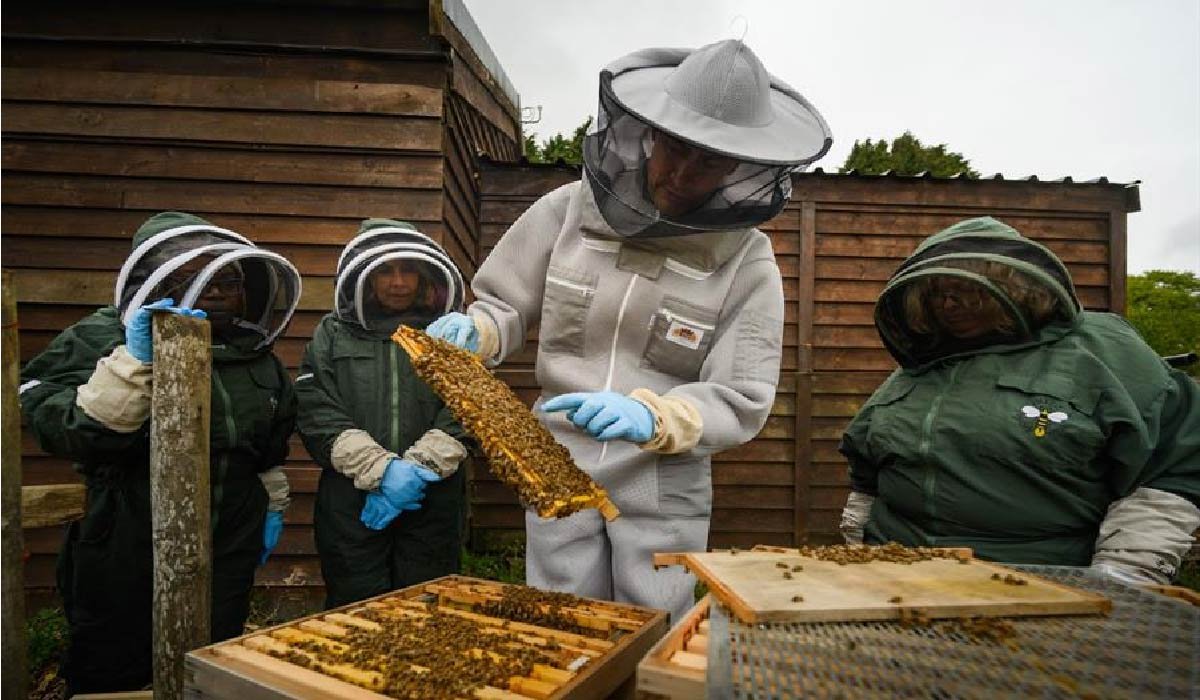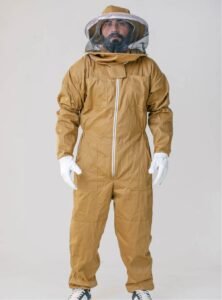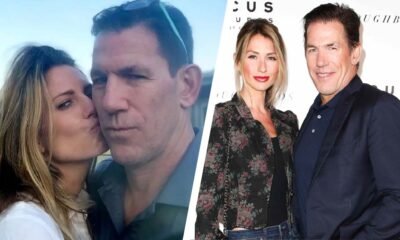Business
What to Look for in a Beekeeper Suit for Sale: Features That Matter

Beekeeping is a rewarding endeavor, offering not only a connection to nature but also the satisfaction of harvesting honey, beeswax, and other bee products. However, it comes with risks, most notably bee stings. A beekeeper suit is your primary defense, ensuring your safety while working with hives. If you’re searching for the perfect beekeeper suit for sale, understanding what features truly matter will help you make the right choice. Let’s delve into the details.
1. Material Quality: The Foundation of Protection and Comfort
The material of a beekeeper suit is pivotal to its performance. It must strike a balance between protection, comfort, and durability. Here are the most common options:
Cotton-Polyester Blends: These are lightweight, breathable, and moderately sting-resistant. They are suitable for beginners and hobbyists who work with docile bee colonies.
Ventilated Mesh Fabric: Ideal for warmer climates, this material allows air to flow freely, keeping you cool during hive inspections. It’s made of multi-layered mesh to ensure sting protection while offering maximum breathability.
Heavy-Duty Cotton or Canvas: These materials provide excellent protection against aggressive bees. However, they can be heavier and less breathable, making them less suitable for hot weather.
Key Consideration: If you work in a tropical or hot environment, a ventilated suit is a must. For regions with cooler climates or more aggressive bees, opt for heavy-duty fabrics.
2. Full-Body Protection: Ensuring Complete Safety

A beekeeper suit must provide comprehensive coverage to minimize exposed skin. Look for suits that include:
Full-Length Body Coverage: The suit should protect every part of your body, extending from your neck to your ankles.
Elastic Seals: These are essential at the wrists, ankles, and waist to prevent bees from sneaking inside. Elastic seals ensure the suit stays snug without being restrictive.
Attached or Detachable Gloves: Gloves should cover your hands and extend to your forearms. Leather gloves are durable, while nitrile gloves allow for better dexterity.
Why It Matters: Even a small gap in your suit can result in bees entering and stinging, which can be both painful and dangerous.
3. Veil Design: Protecting the Most Vulnerable Areas
The veil is arguably the most important component of a beekeeper suit. It shields your face, neck, and head from stings while ensuring good visibility. Veil styles include:
Round Veil: This classic design provides ample space around the face, reducing the risk of bees pressing against the mesh. It also offers excellent ventilation.
Fencing Veil: Attached with zippers, this modern design fits snugly around the head and neck, making it harder for bees to enter. It’s streamlined and less bulky.
Square Veil: Known for its structured design, this veil provides solid protection but may be slightly bulkier than other options.
What to Look For: Ensure the veil is made of durable mesh material that doesn’t easily tear. Zipper or Velcro attachments are preferred over drawstrings for added security.
4. Ventilation: Staying Cool Under Pressure
Beekeeping can be physically demanding, especially during warm weather. A suit with proper ventilation can prevent overheating and improve comfort during long hive inspections. Consider:
Mesh Panels: Suits with strategically placed mesh panels allow for airflow without compromising protection.
Lightweight Fabrics: Opt for suits made from breathable, lightweight materials if you work in a hot climate.
Detachable Layers: Some modern suits feature removable layers for added cooling when needed.
Pro Tip: If you work in a humid area, look for suits marketed as “ventilated” or “aerated” to stay comfortable during extended use.
5. Sting Protection: The Core Function of a Beekeeper Suit
The primary role of a beekeeper suit is to protect you from bee stings. Key features that enhance sting resistance include:
Thick Layers: Multi-layered fabrics provide a barrier that bees cannot penetrate.
Double-Stitched Seams: Reinforced seams prevent bees from slipping through weak points in the fabric.
Secure Zippers and Closures: Look for suits with durable zippers, preferably with a flap or Velcro covering, to prevent bees from accessing the zipper area.
Important Note: No suit is entirely sting-proof, especially if bees get agitated. However, a well-designed suit minimizes the risk significantly.
6. Fit and Size: Comfort Meets Safety
A properly fitting beekeeper suit is essential for both safety and comfort. A suit that’s too tight may restrict movement, while a loose one may leave gaps.
Sizing Guides: Always refer to the manufacturer’s size chart to find the right fit.
Adjustable Features: Suits with drawstrings, elastic bands, or Velcro straps allow for customization and a snug fit.
Room for Layers: If you plan to wear clothing underneath, choose a size that accommodates extra layers without being restrictive.
Why It’s Crucial: Ill-fitting suits can lead to discomfort, restricted movement, or even exposure to bee stings.
7. Durability: Long-Term Value
Investing in a durable suit ensures it lasts through multiple seasons of beekeeping. Features to look for include:
Reinforced Seams: Prevents tearing during rigorous use.
UV Resistance: Prolongs the life of the fabric when working in sunny conditions.
High-Quality Zippers: Prevents jamming or breaking, ensuring the suit remains functional over time.
Pro Tip: While high-quality suits may cost more upfront, their durability often makes them more cost-effective in the long run.
8. Maintenance: Easy Cleaning and Storage
Beekeeping suits inevitably get dirty with honey, wax, propolis, and smoke residue. Choose a suit that’s:
Machine-Washable: For quick and hassle-free cleaning.
Stain-Resistant: Keeps the suit looking professional with minimal effort.
Easy to Store: Lightweight suits that fold compactly are easier to store when not in use.
9. Accessories and Add-Ons
Some beekeeper suits come with extra features or accessories that enhance usability:
Tool Pockets: Handy for carrying hive tools, brushes, or other essentials.
Boot Covers: Protect your ankles and feet from potential stings.
Detachable Veils and Gloves: Allow for customization based on the task at hand.
Bonus Tip: If your suit doesn’t include these, consider purchasing them separately for a complete beekeeping setup.
10. Price and Value: Balancing Cost and Quality
When buying a beekeeper suit, it’s essential to weigh cost against features. High-end suits may offer better protection and durability, but affordable options can be sufficient for beginners.
Seasonal Discounts: Watch for sales during off-seasons.
Bundles: Some suppliers offer discounted packages that include gloves, veils, and other accessories.
Second-Hand Options: For those on a tight budget, gently used suits can be a viable option, but inspect them thoroughly for damage.
Conclusion
When searching for a beekeeper suit for sale, prioritize features that align with your specific needs, environment, and experience level. A high-quality suit is an investment in your safety and comfort, enabling you to work confidently and effectively with your bees.
By carefully considering material, design, fit, and additional features, you can find a suit that offers the perfect balance of protection, comfort, and durability. Happy beekeeping!
For More More Visit, loopermagazine
-

 Celebrity1 year ago
Celebrity1 year agoWho Is Jordan Broad?: The Untold Story of Ashley Broad Husband
-

 Celebrity1 year ago
Celebrity1 year agoWho Is Mary Ryan Ravenel?: Inside The Life Of Thomas Ravenel’s Ex-Wife
-

 Celebrity1 year ago
Celebrity1 year agoWho Is Noelle Inguagiato?: The Untold Story Of Jesse Watters Ex-Wife
-

 Celebrity1 year ago
Celebrity1 year agoWho Is Dolphia Parker?: Everything About Dan Blocker’s Wife
















